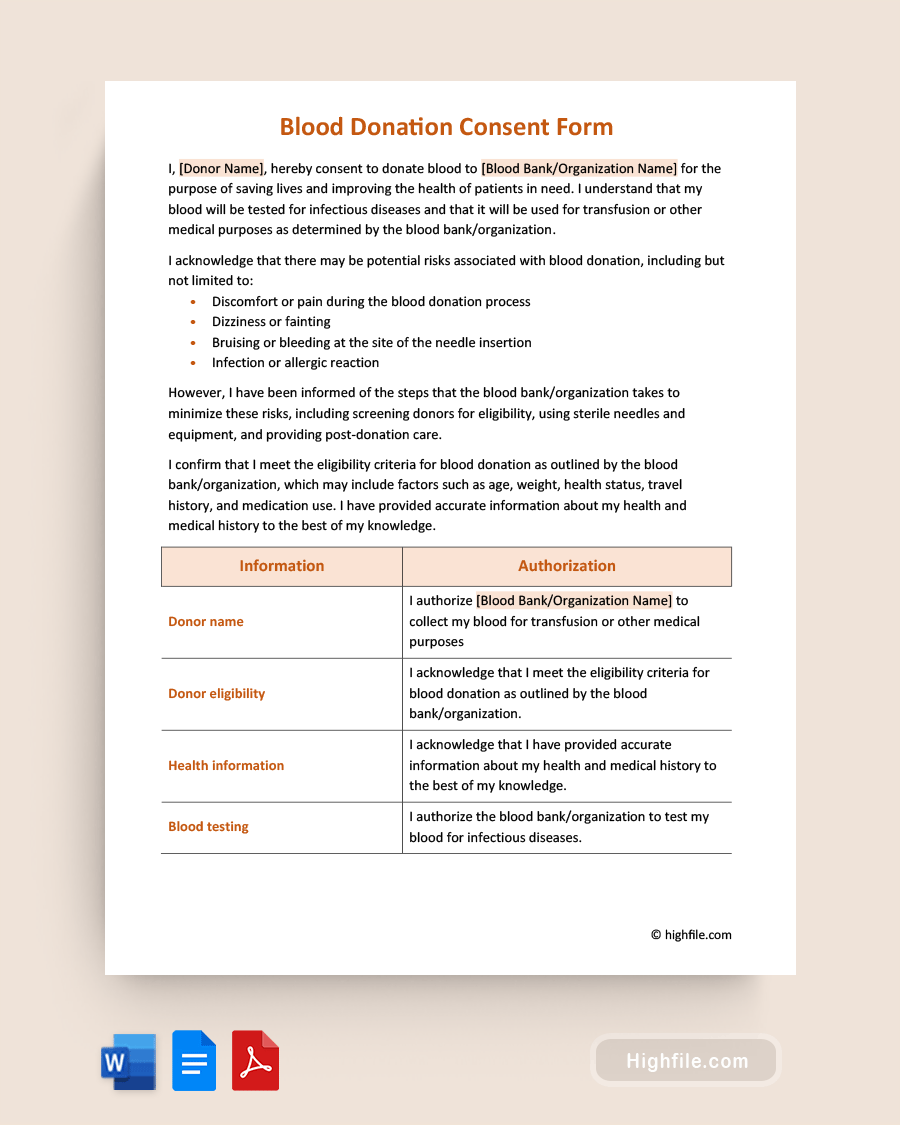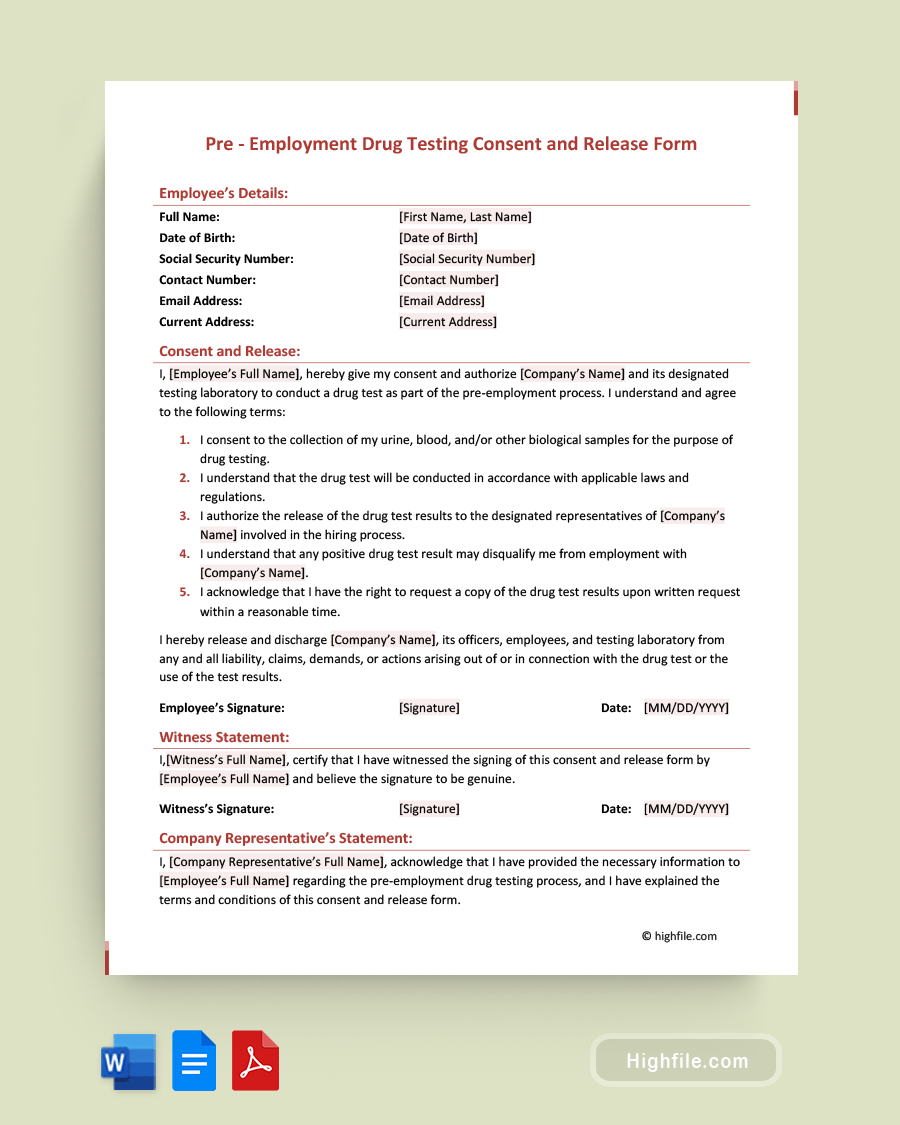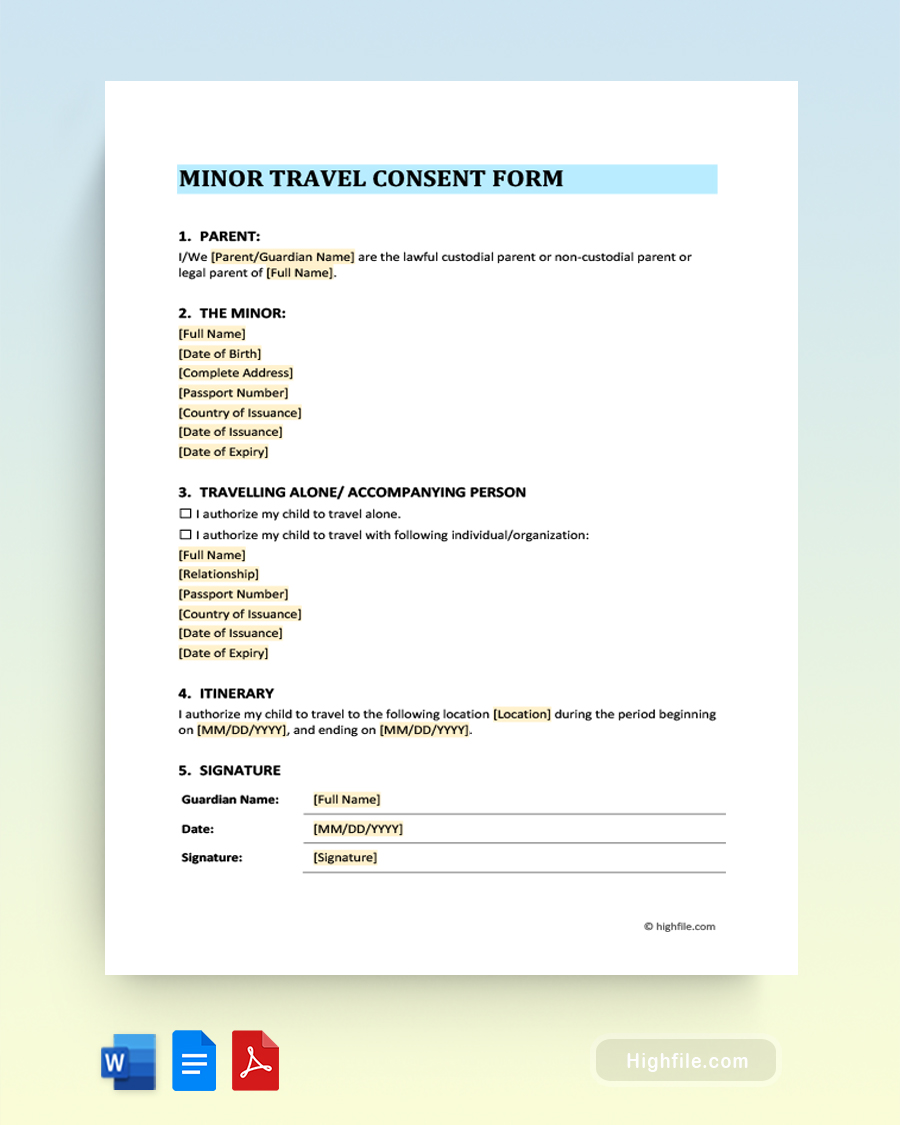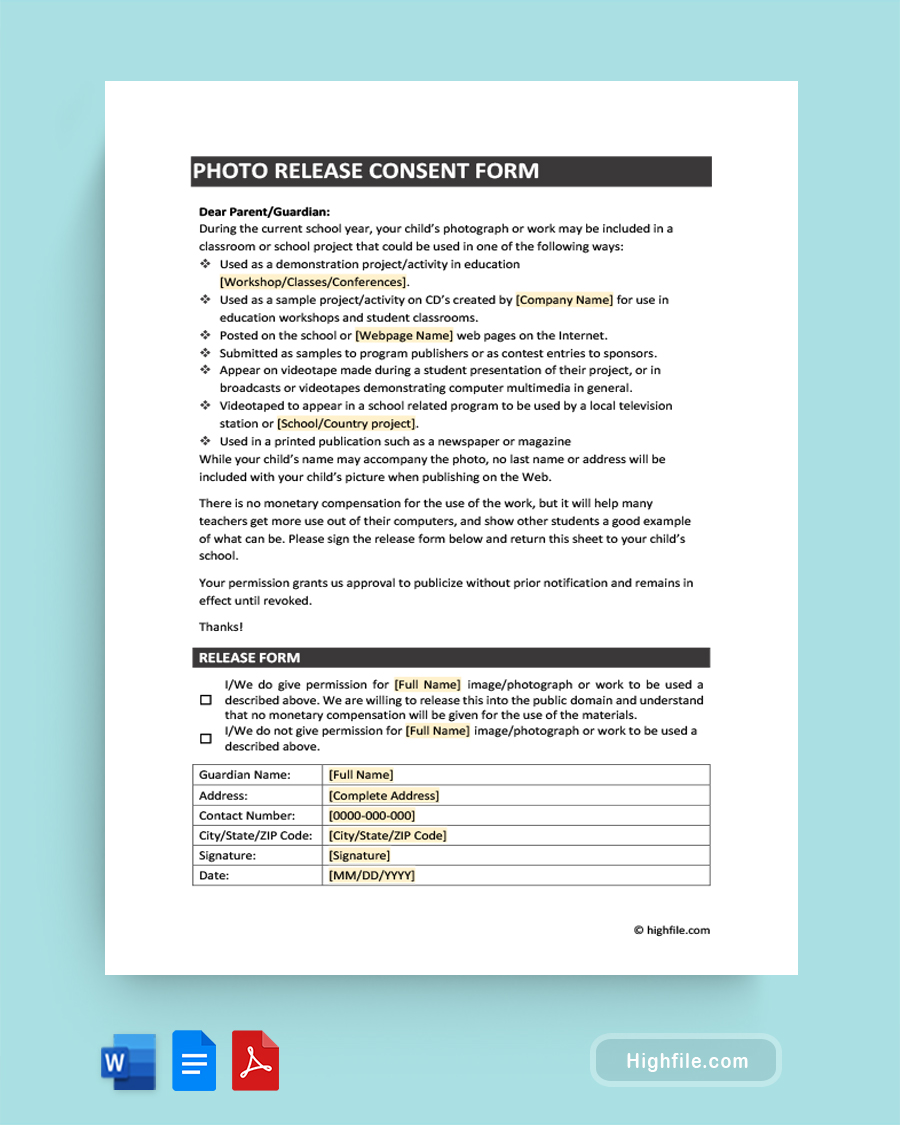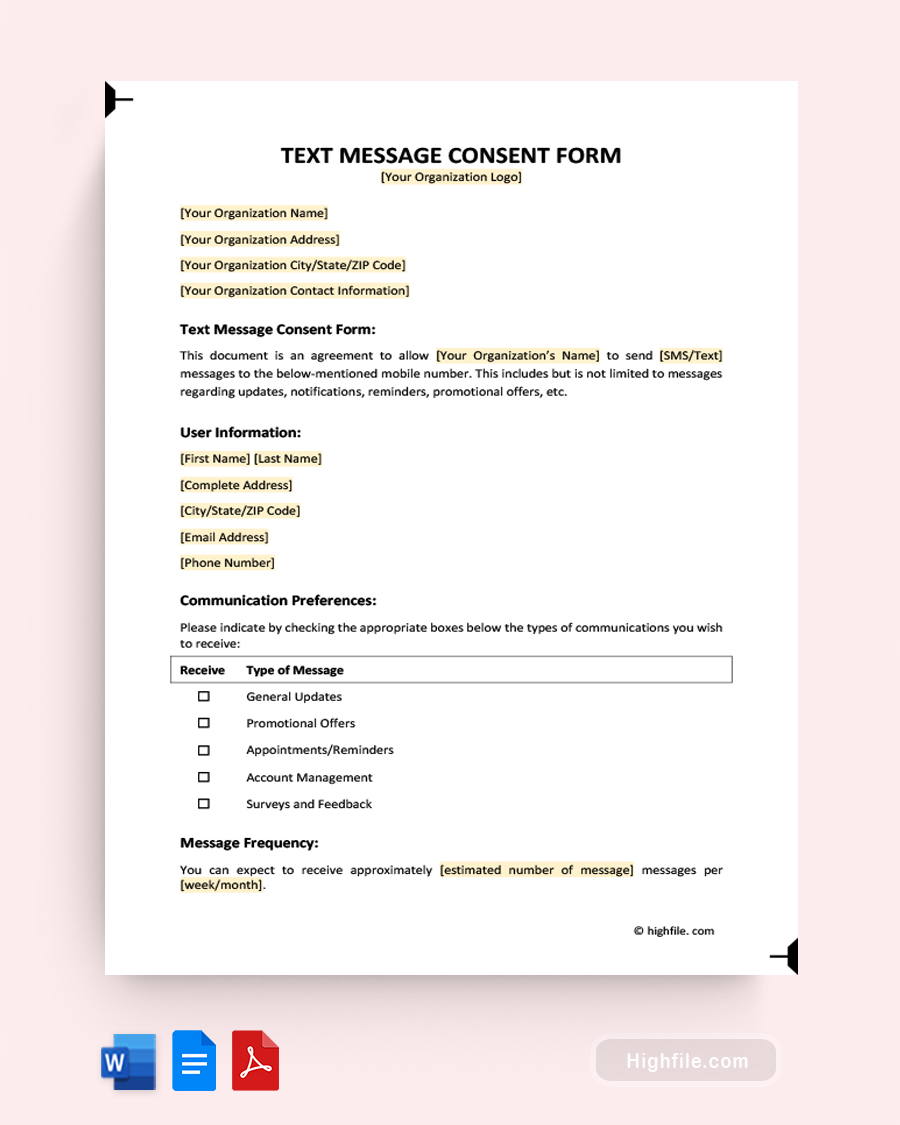Donating blood can save a life, but donors must sign consent paperwork first. Blood donation centers use a consent form to ensure that donors have provided informed consent and are aware of the risks and benefits of donating blood and their rights and responsibilities. It is legally required to protect the legal interests of all parties involved and to ensure that the donation process is safe and ethical. The form also serves as a record of the donor’s eligibility and consent to donate blood. Using our Blood Donation Consent Form Template, you can easily create a custom document to obtain informed consent.
What Is a Blood Donation Consent Form?
The blood donation consent form is a legal document that donors must sign before giving blood, providing info on the process, eligibility, and risks. It includes confidentiality policies and serves as a record of consent with a liability waiver. The form ensures donor protection and informed consent.
Fun Fact: Many countries require blood donors to answer a question about their recent travel history to determine if they’ve been in an area with a higher risk for the Zika virus.
Why Is Blood Donation Consent Form Important?
Blood donation consent forms are important because they ensure donors understand the risks and benefits of donating blood and their rights and responsibilities. Here are some reasons why blood donation consent forms are crucial:
- Legal protection: The consent forms serve as proof that the donor was well informed and aware of the risks and benefits associated with blood donation and gave consent to the procedure. This could be useful in cases of litigation that may arise from complications from the donation process.
- Informed consent: The form provides donors with important information about the donation process, including potential risks and side effects, so they can make an informed decision about donating.
- Safety: The form helps ensure the safety of both the donor and the recipient of the donated blood. Donors are screened for certain health conditions that could make it unsafe for them to give blood. The information helps healthcare professionals determine whether a donor is eligible.
- Record keeping: The form records the donor’s consent and eligibility to donate, as well as any information related to the donation process, such as the date and location of the donation.
- Donor rights: The form outlines the donor’s rights and responsibilities, such as the right to ask questions and receive information about the donation process and the obligation to provide accurate and complete information.
A Brief History of Blood Donation Consent Forms
The use of blood donation consent forms has a relatively recent history. In the early days of blood transfusion, there were few regulations governing the practice, and donors were not required to give informed consent or even disclose their medical history.
In the 1950s, concerns about the safety of blood transfusions began to emerge, particularly around the transmission of infectious diseases such as hepatitis and HIV. As a result, regulations around blood donation became more stringent, and the use of blood donation consent forms became more widespread.
Today, blood donation consent forms are standard practice in blood donation centers and healthcare facilities worldwide. These forms have been essential in improving blood transfusions’ safety and efficacy and have helped protect donors and recipients from harm.
Essential Elements of Blood Donation Consent Form
- Form Title- This shows the purpose of the document.
- Consent- This outlines the agreement to donate blood.
- Acknowledgments- This shows the donor understands the risks, process, and safety precautions, and they meet the eligibility criteria.
- Information and Authorization Chart- This section has a type of information (listed below) in the right column and a specific authorization in the left.
- Name
- Eligibility
- Health
- InfoTesting
- Consent
- Use of Blood
- Confidentiality
- Release of Information
- Understanding Statement- This explains the voluntary nature of blood donation and that the donation may be rejected if found unsuitable.
- Consent Statement- This shows the donor has read and understood the document, agrees to the terms, and has provided accurate information.
- Donor and Witness Signatures and Dates- By signing in front of a witness (who also signs), the donor accepts the terms of the blood donation consent form.
FAQs
Blood donors may decline to sign the consent form, but doing so means they cannot donate blood. This document is legally required to ensure informed consent and donor safety. Without it, the blood organization cannot guarantee safe, ethical procedures. Donors should speak with a representative before deciding whether to donate.
There are specific legal requirements for blood donation consent forms set by the U.S. Food and Drug Administration (FDA) to ensure that donors are fully informed and their rights are protected throughout the blood donation process.
The following is a list of some of the standard requirements for blood donation consent forms:
ᐅ Eligibility criteria: The consent form must outline the eligibility criteria for blood donation, such as age, weight, and health requirements.
ᐅ Use of blood: The consent form must include information on the use of the donated blood, such as transfusions or research purposes.
ᐅ Confidentiality: The consent form must include a statement regarding the confidentiality of the donor’s personal information.
ᐅ Consent for testing: The consent form must include a section for the donor to consent to test their blood for infectious diseases and other conditions.
ᐅ Right to withdraw: The consent form must inform the donor that they have the right to withdraw their consent at any time.
ᐅ Record keeping: The blood donation organization must keep the consent form on file for a specified period.
Minors can donate blood in some cases, but there are additional requirements and considerations for consent forms. In the United States, the FDA allows 16-year-olds to donate blood with parental consent, while 17-year-olds may donate without parental permission. However, individual blood donation organizations may have their own policies regarding the age of donors.
Here are the most common additional requirements and considerations for minors donating blood:
ᐅ Parental consent: The consent form must include a section for the minor donor’s parent or legal guardian to consent to the donation.
ᐅ Eligibility criteria: The consent form must outline the eligibility criteria for blood donation for minors, which may differ from those for adult donors.
ᐅ Age-specific requirements: The consent form may need to include information on age-specific requirements, such as the need for a parent or guardian to accompany the minor.
Key Points
A blood donation consent form is necessary to ensure that donors have provided informed consent and are aware of the risks and benefits of donating blood. The consent document outlines important information about the donation process. By signing the consent form, the donor acknowledges that they have received this information and agree to donate blood. Including this helps ensure the safety of both the donor and recipient of the donated blood. Moreover, it protects the legal interests of all parties involved. Additionally, the consent form serves as a record of the donor’s eligibility and consent to donate blood and can be used for future reference if necessary. By using a Blood Donation Consent Form Template, you can quickly and efficiently create a legal document to use when collecting blood.
